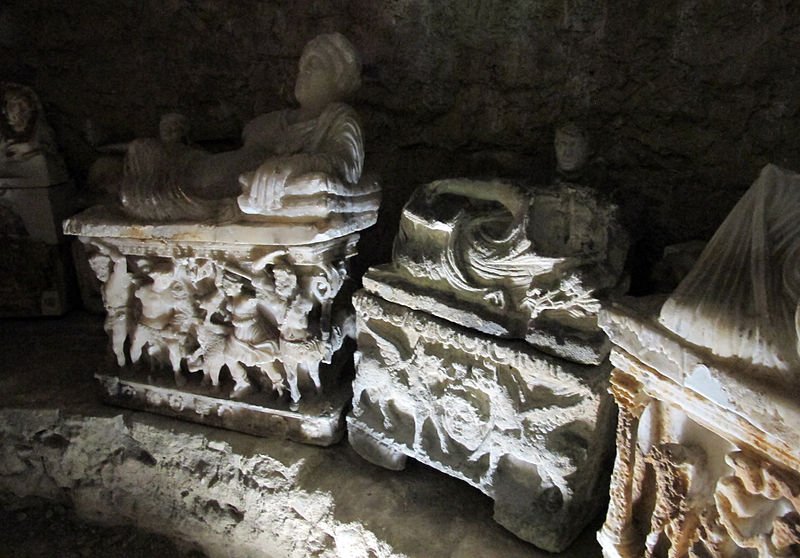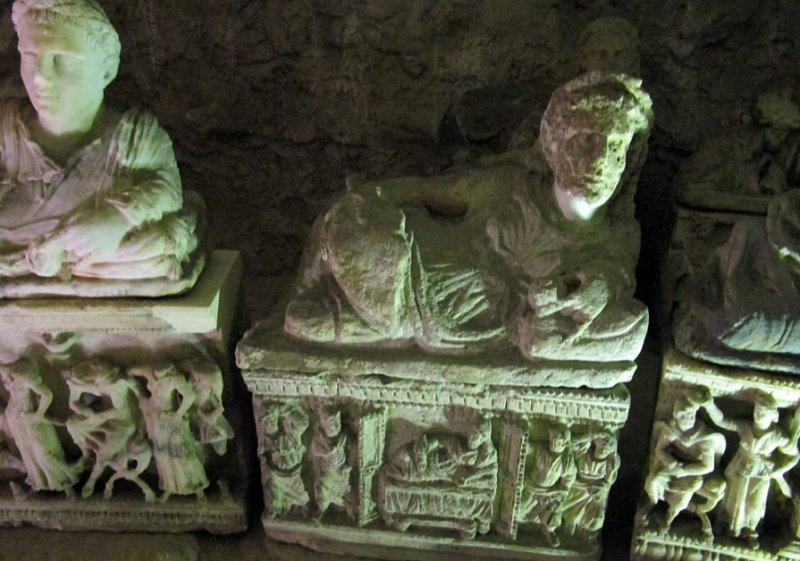Inghirami Tomb – Spectacular Etruscan Burial With 53 Alabaster Urns In Ancient City Of Volterra, Italy
A. Sutherland - AncientPages.com - Many secrets of the ancient Etruscans, who represent one of the most enigmatic civilizations in Europe, are still to be discovered.
Etruscan cemeteries contain different burial practices dated from the 9th to the 1st century BC and bear witness to the achievements of Etruscan culture, which, over nine centuries, developed the earliest urban civilization in the northern Mediterranean.
Inghirami Tomb in ancient Ccity of Volterra, Italy. Image credit: Sailko - CC BY-SA 3.0
Some tombs are monumental, cut in the rock, and decorated by impressive tumuli (burial mounds) and carvings. In contrast, others have wall paintings that successfully survived until now. However, many Etruscan tombs have been looted over the centuries.
Among those still preserved is the Inghirami Tomb, which belonged to the Atia family and is one of the most impressive tombs from the Etruscans' Ulimeto necropolis.
It contained fifty-three urns dating from the first half of the second to the middle of the first century.
The 'Inghirami Tomb' is considered one of the best-known late Etruscan tomb complexes. Two Inghirami brothers discovered it and visited the Ulimeto necropolis outside Volterra, Italy, in 1861.
Etruscan City Of Volterra
A ring of defensive walls surrounds Volterra, an ancient fortress city with Etruscan roots, built by the Medici family in 1474 on the remains of older fortresses. The construction appeared two years after the city of Florence had conquered Volterra after a brutal war over the control of the alum mines.
Closed within mighty old walls and situated on a hill 545 meters above sea level, Volterra is far from the sea and the urban settlements. Over the centuries, it was the city's most favorable strategic position. However, the massive fortress ("Fortezza dei Medici") was not built to protect the area but to subjugate the whole community and discourage rebellion.
However, although the city was closed within its walls, it was repeatedly captured but maintained some independence until the Romans finally conquered it.
Thanks to rich history and culture, Volterra could preserve several monuments, including the 'Inghirami Tomb.' The two young brothers accidentally found the structure outside Volterra's wall circle, where they went to spend their holiday.
Beneath a grassy mound, the boys discovered a subterranean structure - a tomb constructed of a circular chamber roughly hewn in the bedrock, without any decorations, and enclosed by a false dome supported by a central pillar. An entrance passage leads to the room, cut into the tufa rock.
Inside the tomb's chamber are fifty-three spectacular, beautiful cinerary alabaster urns and round central pillars supporting the ceiling, all made from local alabaster stone. The tomb chamber was filled with sixty chests from five-six generations, placed in two rows on the bench and in front of the central pillar.
Inghirami Tomb - Volterra, Italy. Image credit: Sailko - CC BY-SA 3.0
Traditionally, the primary function of the urns was to hold a person's ashes after cremation. This funeral tradition was popular among both classical and prehistoric cultures. The structure represents a characteristic Volterran tomb dated to the 4th-1st century BC. Relief decorations and the reclining lid figures representing the deceased create an illusion of a banquet hall. However, these sculptural decorations were not intended to be public manifestations.
The Inghirami Tomb allows us to admire something from the distant past because there are not many valuable places to see. Almost all the Etruscan tombs were looted in antiquity a long time ago.
The Etruscan urns lack Latin inscriptions typically found on the ones dated to Roman times. Today, the jars that belonged to an Etruscan Volterranian family Ati (Atia), are stored in Florence, Italy. ¨
After the reconstruction, the tomb is now in the garden of the National Archaeological Museum of Florence.
Written by – A. Sutherland - AncientPages.com Senior Staff Writer
Updated on March 07, 2023
Copyright © AncientPages.com All rights reserved. This material may not be published, broadcast, rewritten or redistributed in whole or part without the express written permission of AncientPages.com
Expand for referencesReferences:
MacIntosh Turfa J, The Etruscan World
National Archaeological Museum of Florence
Haynes Sybille, Etruscan Civilization: A Cultural History
Banti, Etruscan Cities and Their Culture
More From Ancient Pages
-
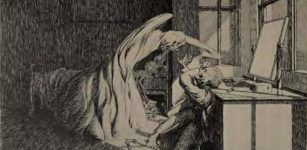 Oh, Whistle, And I’ll Come To You, My Lad – A Christmas Ghost Story
Christmas Traditions | Dec 28, 2024
Oh, Whistle, And I’ll Come To You, My Lad – A Christmas Ghost Story
Christmas Traditions | Dec 28, 2024 -
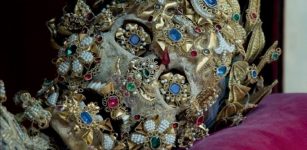 Secret Catacombs With Incredible Ancient Skeletons Covered In Priceless Jewelry
Featured Stories | Nov 20, 2018
Secret Catacombs With Incredible Ancient Skeletons Covered In Priceless Jewelry
Featured Stories | Nov 20, 2018 -
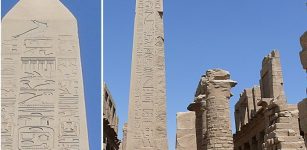 Unknown History Of Gigantic Obelisks Created With Ancient Lost Technology
Ancient Mysteries | Oct 8, 2017
Unknown History Of Gigantic Obelisks Created With Ancient Lost Technology
Ancient Mysteries | Oct 8, 2017 -
 Was 4,000-Year-Old Seahenge In Norfolk Built To Battle Climate Change?
Archaeology | May 31, 2024
Was 4,000-Year-Old Seahenge In Norfolk Built To Battle Climate Change?
Archaeology | May 31, 2024 -
 73 Intriguing Burial Bundles And Carved Masks Placed On False Heads Discovered In Peru
Archaeology | Nov 30, 2023
73 Intriguing Burial Bundles And Carved Masks Placed On False Heads Discovered In Peru
Archaeology | Nov 30, 2023 -
 4,000-Year-Old Serpent-Shaped Wooden Stick Unearthed in Southern Finland
Archaeology | Jun 30, 2021
4,000-Year-Old Serpent-Shaped Wooden Stick Unearthed in Southern Finland
Archaeology | Jun 30, 2021 -
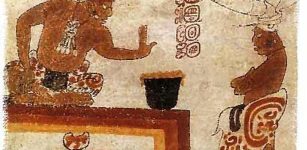 Chocolate Was Invented In Mesoamerica 1900 B.C.
Ancient History Facts | Jan 17, 2016
Chocolate Was Invented In Mesoamerica 1900 B.C.
Ancient History Facts | Jan 17, 2016 -
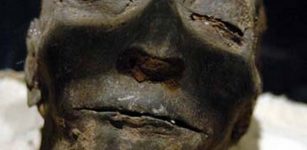 Nebiri, a ‘Chief of Stables’ – oldest case of heart disease in 3,500-year-old mummy
News | Aug 28, 2015
Nebiri, a ‘Chief of Stables’ – oldest case of heart disease in 3,500-year-old mummy
News | Aug 28, 2015 -
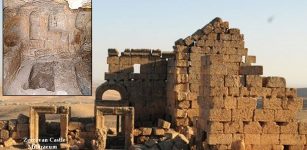 New Discoveries In Excavated Ancient Temple Linked To Secret Mithras Religion
Archaeology | May 15, 2018
New Discoveries In Excavated Ancient Temple Linked To Secret Mithras Religion
Archaeology | May 15, 2018 -
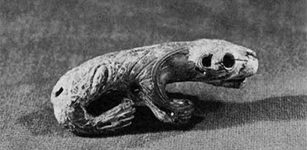 Ancient City Of Ipiutak Was Built By A Fair-Haired Race With Blue Eyes And Not Us – The Inuit Say
Featured Stories | Apr 23, 2019
Ancient City Of Ipiutak Was Built By A Fair-Haired Race With Blue Eyes And Not Us – The Inuit Say
Featured Stories | Apr 23, 2019 -
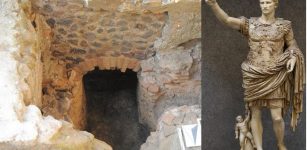 Lost Villa Of First Roman Emperor Augustus Found At Somma Vesuviana In Southern Italy
Archaeology | Apr 19, 2024
Lost Villa Of First Roman Emperor Augustus Found At Somma Vesuviana In Southern Italy
Archaeology | Apr 19, 2024 -
 Eduba: Scribal School In Ancient Mesopotamia
Ancient History Facts | Jun 29, 2016
Eduba: Scribal School In Ancient Mesopotamia
Ancient History Facts | Jun 29, 2016 -
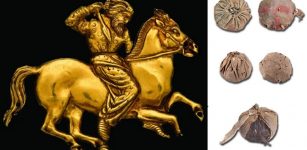 Eurasian Horse Riders Played Ball Games 3,000 Years Ago – Leather Balls Found In Graves Reveal
Archaeology | Oct 12, 2020
Eurasian Horse Riders Played Ball Games 3,000 Years Ago – Leather Balls Found In Graves Reveal
Archaeology | Oct 12, 2020 -
 Evidence Of The Moon-Eyed People – Strange Runic Tablet And A Curious Discovery In North Dakota – Part 1
Ancient Mysteries | Dec 26, 2019
Evidence Of The Moon-Eyed People – Strange Runic Tablet And A Curious Discovery In North Dakota – Part 1
Ancient Mysteries | Dec 26, 2019 -
 Cupbearer Was Privy To Conversations And Political Secrets Hidden Behind Closed Doors
History | Feb 3, 2025
Cupbearer Was Privy To Conversations And Political Secrets Hidden Behind Closed Doors
History | Feb 3, 2025 -
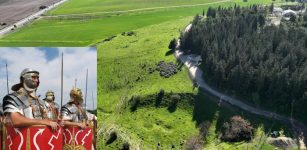 First Roman Military Amphitheater Unearthed Near Megiddo
Archaeology | Jun 1, 2022
First Roman Military Amphitheater Unearthed Near Megiddo
Archaeology | Jun 1, 2022 -
 Unexplained Mystery Of The Ship Of Horror – An Unsettling Story
Featured Stories | Aug 22, 2024
Unexplained Mystery Of The Ship Of Horror – An Unsettling Story
Featured Stories | Aug 22, 2024 -
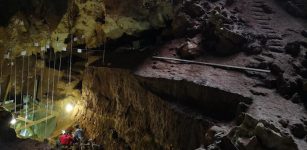 Early Homo Sapiens From Southeast Asia Could Adapt To A Rainforest Environment
Archaeology | Oct 17, 2021
Early Homo Sapiens From Southeast Asia Could Adapt To A Rainforest Environment
Archaeology | Oct 17, 2021 -
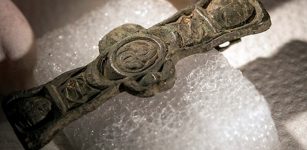 Medieval Irish Book Fitting Among Historical Finds Unearthed In Old Cemetery In Norway
Archaeology | Dec 15, 2017
Medieval Irish Book Fitting Among Historical Finds Unearthed In Old Cemetery In Norway
Archaeology | Dec 15, 2017 -
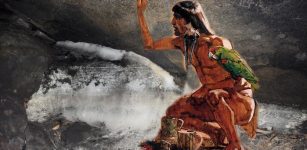 Ancestral Puebloans Survived Devastating Climate Change Hiding In New Mexico Lava Tubes
Archaeology | Nov 20, 2020
Ancestral Puebloans Survived Devastating Climate Change Hiding In New Mexico Lava Tubes
Archaeology | Nov 20, 2020


